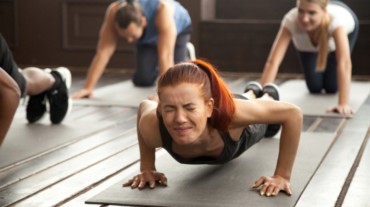After sweating it out in a gym or going for a run, you may feel sore sometimes. You might have a tight and achy feeling while trying to use your muscles to do things. Some people might be happy about it as having sore muscles generally means you pushed yourself hard while working out. You might be smiling about it and heading out for work or doing household chores, but the achy feeling doesn’t go away. It doesn’t get better the following day either. Does that mean you should rest or workout while you are still sore?
Delayed onset of muscle soreness (DOMS) is a common condition that can cause pain and stiffness in a trained muscle, explains fitness expert Varun Rattan. It is caused by muscle damage that usually occurs during a lifting session and typically happens 12 to 72 hours after a workout session, depending on the individual. DOMS can also cause possible loss of strength in the muscle and stiffness in the affected joints, thus reducing mobility.

There are some factors that may increase your chances of ending up with sore muscles after workout:
• Doing a physical activity to which your body is not used to.
• Starting a new fitness programme.
• Making changes in your workout routine.
• Increasing the intensity or duration of exercises.
It is true that beginners or someone who has started working out again after a long break would typically experience soreness in the first couple of weeks of training. But even an experienced gym-goer might get sore if they increase the training volume, intensity or try a new workout regime.
Should I workout if I am sore?
If you are in pain or experiencing symptoms of fatigue, just take rest. Rattan says it is not advisable to train with sore muscles if the soreness is debilitating and restricts mobility and strength. In such cases, it is recommended to avoid training that muscle hard again for about 10 to 14 days. Sometimes, soreness can prevent you from reaching proper lifting positions and make the execution of a compound lift less efficient. Practicing the lift with bad form can lead to poor motor learning.
How to workout with sore muscles
Although being sore can be a pleasant feeling for hardcore gym addicts, it doesn’t mean you are stimulating more muscle growth. It means that your body isn’t used to handling that amount of physical stress, says the expert.

Here are some tips to follow:
• Mobility work done at the end of a workout is a good idea.
• Some light exercises involving the sore muscles can increase blood flow and nutrient transportation to it, speeding up recovery.
• Short and multiple bouts of light to moderate physical activity like walking or biking can be beneficial.
• Foam rolling the affected muscles can also help reduce soreness. It is similar to massage, so it can promote blood flow to muscles and help in reducing inflammation.
• Avoid taking painkillers as they can interfere with recovery and hinder adaptation to training.
Usually, DOMS does not need any medical treatment. It takes just a few days for the soreness to go away. So, be patient and take rest as much as you can. Also, if you are trying a new type of exercise or working out for the first time, go slow at first. If you gradually increase the intensity and frequency of the exercise, you might not have to deal with soreness after a workout.
#Workout #sore #muscles #Good #bad #idea
